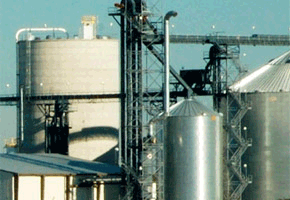

Workshop brings together BIOEN-FAPESP researchers with projects focused on the production of second-generation ethanol, biodiesel and other chemical products from renewable sources
Workshop brings together BIOEN-FAPESP researchers with projects focused on the production of second-generation ethanol, biodiesel and other chemical products from renewable sources
Workshop brings together BIOEN-FAPESP researchers with projects focused on the production of second-generation ethanol, biodiesel and other chemical products from renewable sources

Workshop brings together BIOEN-FAPESP researchers with projects focused on the production of second-generation ethanol, biodiesel and other chemical products from renewable sources
By Karina Toledo
Agência FAPESP – Researchers and students from two of the five divisions of the FAPESP Program for Bioenergy Research (BIOEN)—“Biofuel Technology” and “Biorefineries”—attended a workshop held on August 20 and 21 in São Paulo.
The workshop involved 27 presentations, with the majority focused on methodologies to improve the production of second-generation ethanol from sugarcane bagasse and the utilization of residue from the fermentation process, as a means of reducing the final costs of biofuels.
The two-day workshop also involved presentations on the results of projects conducted to obtain biofuels from vegetable oils and projects that propose to utilize residues in the manufacturing of high value-added chemical products, such as glycerol. The concept of biorefineries was also covered in the presentations and the use of renewable fuel sources to produce lactic acid and acrylic acid was discussed.
“The objective was to disseminate the advances obtained in each of the projects with a view toward promoting broader interaction among the groups and identifying research areas that need more investment,” explains Rubens Maciel Filho, a full professor in the Chemical Engineering Department at Universidade Estadual de Campinas (Unicamp) and a member of the coordination team at BIOEN-FAPESP.
In his presentation, Maciel presented the results of a Thematic Project he coordinates that aims to produce ethanol and other products from the residues generated at sugar mills.
“Little attention has been given to the vinasse and carbon dioxide (CO2) that are left over after the fermentation of sugarcane juice during the production of first-generation ethanol. These residues are currently available in the ethanol production industry and can be taken advantage of,” he affirmed.
For each liter of ethanol produced, according to Maciel, approximately 10 to 11 liters of vinasse is generated, and is currently discarded into the soil as a fertilizer. One of the proposals under study is transforming this residue into biogas.
“To do so, vinasse is enriched with part of the hydrolyzed material obtained in second-generation ethanol production, which is then subjected to a new fermentation process. The resulting methane gas can be sold or used at the mill as a source of energy,” explains Maciel.
One of the possible uses under study for the CO2 released during sugarcane fermentation is using the residue to feed microalgae, which can be used as biomass for third-generation ethanol and biodiesel production.
“Each liter of ethanol produced emits an amount of CO2. Today, this is released into the atmosphere and is theoretically reabsorbed by sugarcane. But we can make more integrated use of this CO2 in the production process. There is a lot of CO2 in the atmosphere for the sugarcane to absorb,” comments Maciel.
The use of microalgae to sequester atmospheric CO2 was also the topic of a presentation by Ana Teresa Lombardi of Universidade Federal de São Carlos (UFSCar), who also coordinates a project funded by FAPESP and Braskem through the Research Partnership for Technological Innovation Program (PITE).
Andreas Karoly Gombert, from the Polytechnic School at Universidade de São Paulo (USP), presented the results of a study conducted in partnership with groups from Universidade Federal de Santa Catarina (UFSC) and Holland’s Delft University of Technology. This study managed to increase first-generation ethanol output by 11%, by using genetically modified yeast in the sugarcane fermentation process.
Presenters also showcased diverse methods for the pretreatment of sugarcane bagasse, with the objective of making this biomass feasible for fermentation and transformation into ethanol. “It’s time to select one or two pretreatment processes and determine how they can be scaled up,” explained Maciel.
Integration
The workshop was part of an ongoing series that is being conducted by the BIOEN-FAPESP program throughout 2012. In April, researchers from the “Impacts and Sustainability” division met. In July, the “Biomass for Bioenergy” division held similar workshops.
According to Glaucia Mendes Souza, a member of the BIOEN-FAPESP coordination team, the October workshop will bring together students and researchers under the “Ethanol Applications for Automobile Engines: internal combustion and fuel cell engines” division.
“The program has grown so much that, this year, we decided to do separate workshops for the areas. However, all the divisions will come together in November at an event open to the public that will release the results of the studies conducted to date,” she reports.
As of 2012, work meetings will be held on more specific topics to consolidate the knowledge generated by the projects. “We will bring together, for example, the varied workgroups that research pretreatment methods for sugarcane bagasse and evaluate the best techniques in terms of water, energy and residue use and determine what is best from the point of view of cost and sustainability. In addition, we will identify whether there is research ready to be transferred to the production sector,” explained Souza.
More information is available at: http://www.fapesp.br/en/472
Republish
The Agency FAPESP licenses news via Creative Commons (CC-BY-NC-ND) so that they can be republished free of charge and in a simple way by other digital or printed vehicles. Agência FAPESP must be credited as the source of the content being republished and the name of the reporter (if any) must be attributed. Using the HMTL button below allows compliance with these rules, detailed in Digital Republishing Policy FAPESP.




